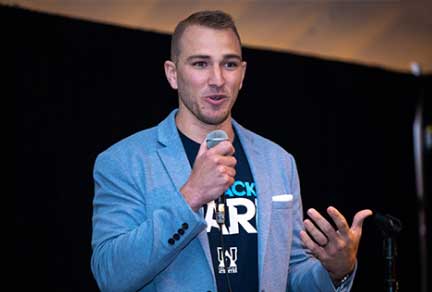Integrated development planning and risk management starts with market access consulting, leading to early, smart investments yielding lifecycle payoffs
Pivotal evidence and access work streams are often launched with the start Phase III clinical trials. But by starting earlier, you can build the complete evidence package that payers require, from the outset.
At Parexel, we’re perfectly positioned with fully integrated regulatory, access, HEOR, RWE, and patient-reported outcomes (PRO) services to collect the right evidence, early in development. Starting early is key, and as a result, you benefit from a real-world point of view relevant to reimbursement while developing and adapting your product’s evidence-driven value story throughout the research lifecycle.
Think globally
Navigating the needs of multiple global commercial stakeholders, with varying systems and processes to determine value and access is complex. In a rapidly evolving industry, key market dynamics demand attention:
- United States: The Inflation Reduction Act (IRA) has changed the drug market, emphasizing cost containment and sharpening the focus on ROI
- Europe: Health technology assessments (HTAs), not only shape European policy but also influence the US, setting rigorous standards for value demonstration. Products must showcase not only clinical value but also economic worth and competitive differentiation
- APAC: Navigating the Asian market requires adaptability. While Japan commits to HTAs, China’s regionalized approach means varying assessment requirements
Market access consulting solutions
- Market access strategy and delivery: Craft comprehensive plans to identify target markets, assess market potential and overcome access barriers, enabling successful product launches
- Value proposition development: Define and communicate the unique value of your drug to key stakeholders, demonstrating its clinical and economic advantages over existing treatments
- Pricing and reimbursement strategy: Develop tailored pricing strategies and reimbursement models that align with local market dynamics and maximize profitability
- HTA support: Provide the necessary data and analysis to navigate the many HTA processes and secure favorable recommendations for reimbursement.
- Payer engagement: Build strong relationships with payers to understand their needs and expectations
Health economics and outcomes research (HEOR)
- HEOR strategy and delivery: Generate robust evidence on the value and outcomes of your drug to demonstrate its efficacy and cost-effectiveness to payers
- Evidence evaluation: Conduct comprehensive assessments of clinical data and evidence to support payer negotiations and health technology assessments
- Health economic modelling: Utilize advanced economic modeling techniques to quantify the economic impact and value proposition of your drug, enabling informed pricing and reimbursement strategies
- Patient-reported outcomes (PROs): Incorporate patient perspectives and experiences into the assessment of treatment outcomes, leveraging PRO data to demonstrate the real-world impact and patient-centered benefits of your drug
Advanced analytics
- Advanced parametric models: Apply advanced parametric methods such as mixture cure fraction models and Bayesian multi-parameter evidence synthesis to successfully engage earlier with HTAs using relatively immature data with shorter patient follow-up
- Predictive analytics, machine learning, and artificial intelligence: Harness advances, including natural language processing (NLP), machine learning (ML), and artificial intelligence (AI) with predictive analytics to access critical patient insights from big data, whether gathered from clinical trials, literature, or real-world sources.
- Data visualization and programming support: Develop digital solutions with data visualization tools/apps and platforms to facilitate multi-stakeholder decision-making. Our team routinely develops indication-agnostic tools and provides bespoke programming support to staff your internal solutions
Real-world evidence (RWE) and late-phase research
We advise on RWE strategies (including registry studies), alongside your clinical development program, to reassure payers that your clinical results are reflective of what will be evidenced in real-world clinical practice.
Our RWE experts work with you to explore the impact of a therapy and/or disease in a real-world setting, generating data that will support your value proposition to regulators, payers, physicians, and patients. We understand the need for interconnected, patient-specific, longitudinal data to track outcomes over time and partner with companies of all sizes to solve this challenge, including use of hybrid prospective/retrospective RWE studies. Our solutions include:
Real-world data services
Our cross-functional teams, established processes, and cloud-based technology platform generate fit-for-purpose, real-world data that strategically supports scientific or commercial analysis.
Observational/non-interventional studies
Provide valuable insights into the causal association between a treatment (e.g., a drug, device, or procedure) and a particular event or outcome (e.g., long-term effectiveness and safety).
Late-stage clinical trials
We provide multiple options for late-stage programs, including pragmatic trials or interventional trials with experience in peri/post-approval research to back it up.
Your trusted experts in drug commercialization
Many on our team have tenure with regulatory agencies, payers, sponsors, HTA decision-making bodies, and industry-leading organizations such as IFPA and EFPI – as well as advanced academic degrees in science, economics, health policy, and business. As a result, you benefit from academic rigor, as well as a real-world point of view relevant to reimbursement when developing and adapting your product’s evidentiary value story through the research lifecycle. We offer:
- Fully integrated solutions involving regulatory, access, RWE, medical communications, PROs, and advanced analytics teams with a direct line to our clinical colleagues
- More than 130 global evidence and access staff
Frequently asked questions
Market access consulting is a specialized field within the healthcare and pharmaceutical industries that focuses on helping companies navigate the complex landscape of bringing new medical products, such as drugs or medical devices, to market. These consultants work to ensure that innovative treatments and technologies not only receive regulatory approval but also achieve commercial success by being accessible and affordable to patients who need them.
Market access consultants typically provide strategic advice and support in areas such as pricing strategies, reimbursement pathways, health economics, and outcomes research. They help pharmaceutical and medical device companies demonstrate the value of their products to various stakeholders, including payers, healthcare providers, and policy makers. This involves conducting market research, analyzing health economic data, developing value propositions, and creating strategies to overcome potential barriers to market entry. The ultimate goal of market access consulting is to optimize the launch and adoption of new healthcare products, ensuring they reach the patients who can benefit from them while also meeting the economic and regulatory requirements of different healthcare systems around the world.
1. Clinical Effectiveness:
- This pillar focuses on demonstrating the clinical benefits and safety of the product.
- It involves conducting robust clinical trials and generating evidence to show how the product improves patient outcomes compared to existing treatments.
- The goal is to prove that the product is safe, effective, and provides meaningful benefits to patients.
2. Economic Value:
- This pillar is about showcasing the cost-effectiveness and overall economic value of the product.
- It includes conducting health economic evaluations, such as cost-effectiveness analyses and budget impact models.
- The aim is to demonstrate that the product provides good value for money and is affordable for healthcare systems.
3. Stakeholder Engagement:
- This pillar involves identifying and engaging with key stakeholders throughout the product lifecycle.
- Stakeholders may include patients, healthcare providers, payers, policymakers, and regulatory bodies.
- The goal is to understand their needs, concerns, and decision-making processes, and to build relationships that support market access.
4. Policy and Reimbursement:
- This pillar focuses on navigating the complex landscape of healthcare policies and reimbursement systems.
- It involves understanding and addressing regulatory requirements, pricing regulations, and reimbursement pathways in different markets.
- The aim is to develop strategies that ensure the product can be appropriately priced, reimbursed, and integrated into healthcare systems.
By addressing these four pillars, companies can develop comprehensive market access strategies that increase the likelihood of successful product launches and sustained patient access to their innovations.
Early market access consulting is crucial for clinical research because it helps pharmaceutical and medical device companies align their product development strategies with market needs and expectations from the very beginning. By integrating market access considerations into the early stages of clinical research, companies can design their studies to not only meet regulatory requirements but also address the demands of payers, healthcare providers, and patients. This proactive approach allows for the collection of relevant data on clinical effectiveness, safety, and economic value that will be essential for securing market access once the product is ready for launch.
Furthermore, early market access consulting can significantly impact the overall success and return on investment of a clinical research program. By identifying potential market access challenges early on, companies can make informed decisions about resource allocation, study design, and target patient populations. This can help avoid costly late-stage pivots or the collection of insufficient data that could hinder market access upon approval. Early consultation also allows for the development of a robust value proposition and evidence generation strategy that aligns with the needs of various stakeholders across different markets. Ultimately, this integrated approach can lead to faster time-to-market, improved product positioning, and better patient access to innovative treatments, which are all critical factors in the increasingly competitive and cost-conscious healthcare landscape.
Market access consulting plays a crucial role in supporting pricing and reimbursement strategies for pharmaceutical and medical device companies. Consultants in this field provide expert guidance on developing pricing strategies that balance the need for profitability with the demands of various healthcare systems and payers. They conduct in-depth analyses of market conditions, competitor pricing, and healthcare budgets across different regions to help companies determine optimal price points for their products. Additionally, market access consultants assist in developing value propositions that justify the proposed prices by demonstrating the product's clinical benefits, cost-effectiveness, and potential to improve patient outcomes or reduce overall healthcare costs.
In terms of reimbursement, market access consulting is essential for navigating the complex landscape of healthcare funding and insurance systems. Consultants work closely with companies to develop reimbursement dossiers that present compelling evidence to payers and health technology assessment (HTA) bodies. This involves conducting health economic evaluations, such as cost-effectiveness analyses and budget impact models, to demonstrate the product's value for money. Market access experts also help companies understand and adapt to different reimbursement mechanisms across various markets, such as risk-sharing agreements, outcomes-based contracts, or innovative pricing models. By providing strategic insights and support throughout the pricing and reimbursement processes, market access consulting helps ensure that innovative treatments not only receive regulatory approval but also achieve commercial success and reach the patients who need them.
Our experts
Browse our latest insights
Want to hear from our experts on the latest industry topics? Visit our Insights Center to read, watch, and listen.



